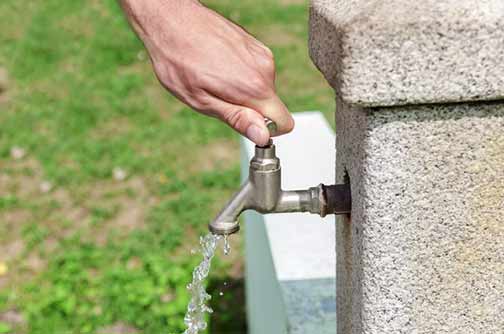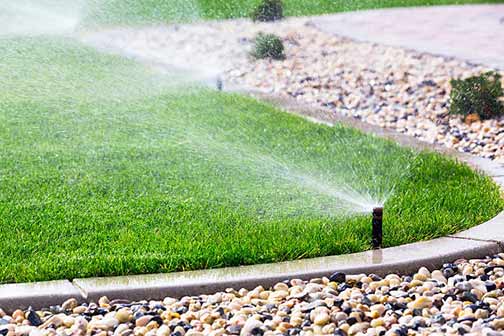
Outdoor plumbing problems in the home are often viewed as less important than indoor plumbing issues, says State Management team. This is because problems in indoor plumbing affect us more and, therefore, feel more urgent. But your outdoor plumbing is just as vital as your indoor plumbing.
In fact, the outdoor components of your plumbing actually help to sustain the function of your indoor plumbing. Keeping the outdoor plumbing system in good condition will improve its performance.
In this post, we address common outdoor plumbing issues in the home and what to do about them.
Loose or burst outdoor pipe
Outdoor pipes, especially underground ones, may be damaged by shifting soils, freezing, human activities, and aging. However, these problems are usually not visible because, unlike water pipes inside the home, broken outdoor pipes discharge their water into the ground.
If your outdoor pipe is broken, you may experience problems like water discoloration, smelly water, low water pressure (affecting your home and not your neighbor’s), strange puddles or wet spots in the yard, and strange hikes in your water bill.
To know if your outdoor pipe is broken, turn off the water supply to your home at the main water shut-off valve. Locate the water meter and check if the dial is moving despite the water supply being turned off. If it is moving, you have a leak in your outdoor pipe.
Dirty or broken valves
The main water valve plays a vital role in regulating water pressure and flow into your home; it ensures that water is routed correctly from the main water line. Other outdoor valves include hose bibs and supply stop valves, both of which are related to outdoor faucets.
The function of your main water valve will be impaired if the device is loose, jammed with debris, or damaged. A malfunctioning main water valve can cause imbalances in water pressure, total water loss, uneven water distribution, and spikes in your water bill.
If water is flowing from the handle of the main water valve or other outdoor valve, the valve should be replaced. If the valve is blocked by debris, cleaning it will restore its function. The best way to know if your main water valve is damaged is to have a professional plumber inspect it.

Faulty sprinkler system
In-ground lawn sprinkler systems have several components and detecting problems can be very challenging. Typically, a sprinkler system consists of box & zone valves, irrigation zones with separate components, electronic controllers, and anti-siphon devices.
Common signs that there are problems in your sprinkler system are; low water pressure at some or all the sprinkler heads, some sprinkler heads not working, entire sprinkler zones not working, visible leaks around valves, and leaks at the sprinkler heads.
The best way to approach sprinkler system issues if you have multiple zones is to run individual zones one at a time. If the problem zone is found, clear the debris around the sprinkler head and inspect it, check the irrigation for leaks, and inspect the backflow device. If this doesn’t work, contact a professional plumber.
Frozen outdoor pipes and faucets
In a way, finding and fixing a frozen or burst pipe is harder when the pipe is outdoors, especially if it is an underground pipe. The main problem with frozen underground pipes is access. It is hard to know if a pipe is frozen when you cannot even see it.
Typically, buried pipes will only freeze if a section of the line is above the frost line. Hose bibs and exterior faucets/pipes are more likely to experience problems during winter. If a faucet connected to an outdoor pipe is unresponsive you may assume that the pipe has frozen.
An outdoor pipe that is sweaty is probably frozen. To tackle the problem, use safe sources of indirect heat to thaw the ice. A long-term solution to this problem is to insulate the exposed pipes in your home and winterize your home to protect the plumbing.
Blocked sewer line
A blocked sewer line is the mother of all outdoor plumbing problems in the home. This problem can put all the plumbing fixtures in your home – toilet, shower, sinks, and appliances – out of commission. It can also result in sewage backing into your home.
Common signs that your sewer line is blocked include; gurgling/bubbling sounds from the toilet each time you flush, inconsistent water levels inside the toilet bowl, sewer odors in the home, fruit flies and other pests on your property, and frequent drain clogs in the home.
A blocked sewer line is not a problem you can DIY. Sewer line problems are best handled by licensed plumbers and you may want to contact the plumber ASAP. To troubleshoot the sewer line your plumber will perform a sewer camera inspection to find the problem and determine the best solution.
To conclude, all plumbing issues in your home, whether they are outdoor or indoor, can be avoided or found early if you follow a schedule of preventive maintenance for your plumbing system. It is also important to work with an experienced professional plumber.

